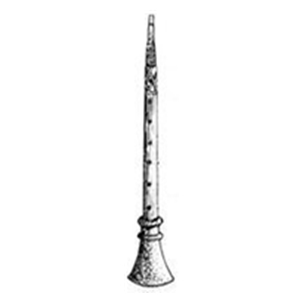The history of Paul
Polie is a double-reed gas-sounding musical instrument of the Zhuang nationality, and it is a folk musical instrument with a long history.

The wave of the Zhuang nationality has a long history and evolved from the suona introduced from the north, but there is no historical data to test when and what generation it was introduced.
In Jinlong Village, Longzhou County, Guangxi, in the home of Huang Yuzhen, an old folk artist, there was a Polie that was preserved more than 600 years ago, which is a treasure passed down from generation to generation by the Huang family. It can be seen that Polie has been circulated among the Zhuang people at the latest at the end of the Yuan and the beginning of the Ming Dynasty. The shape, structure, pronunciation principle and playing method of the wave train are roughly the same as the suona of the Han nationality, but there are some differences, such as the tube body is short and straight, the surface has no wavy curve, the bell mouth is made of wood, and Thin and small, the core is a tin tube, the cocoon is a whistle and so on.
 渝公网安备 50010702504639号
渝公网安备 50010702504639号